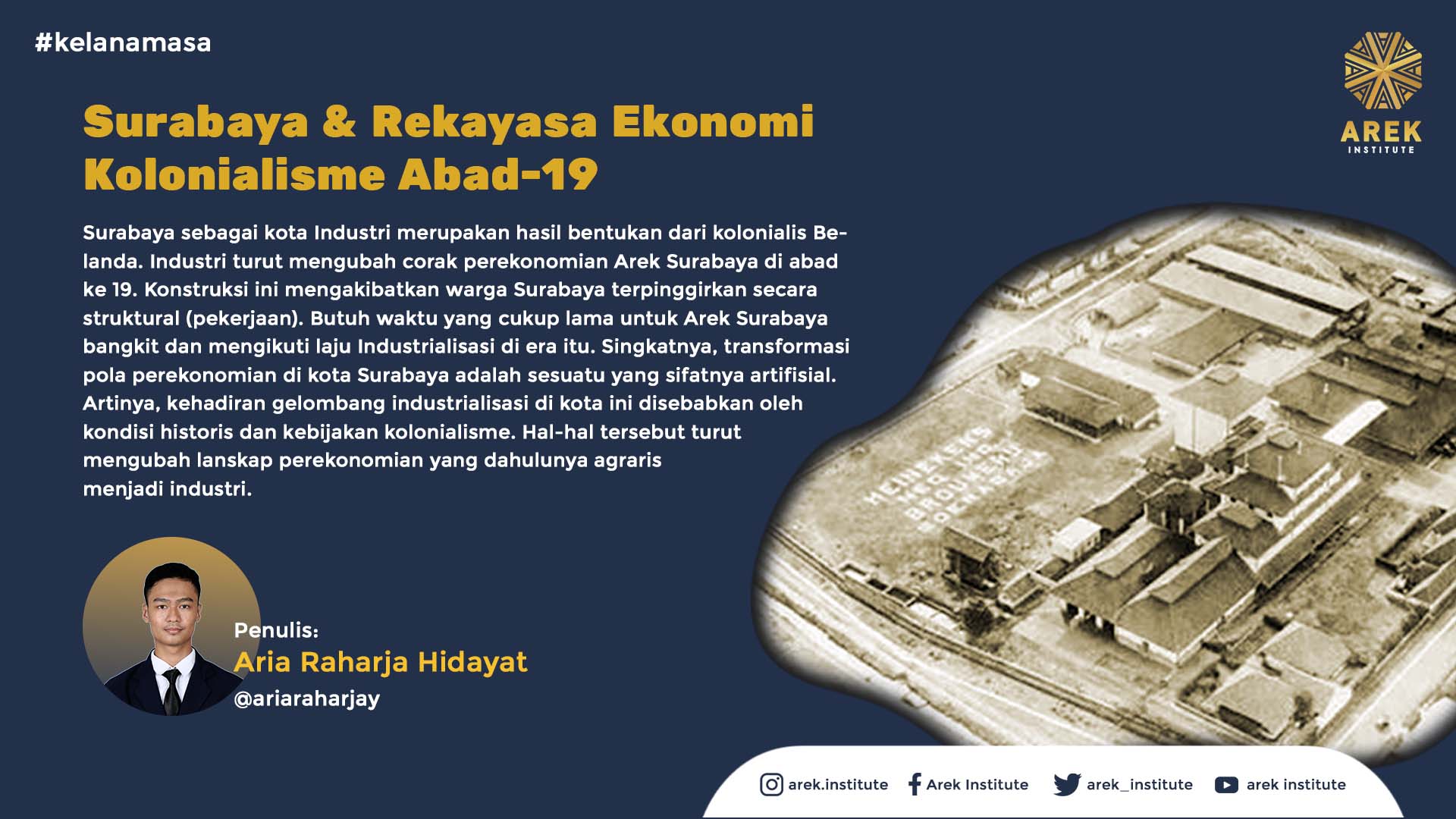
Colonialism significantly transformed the production and food consumption patterns of its colonized societies. This shift is evident from the phenomena during that period, notably the transition from the Cultivation System (cultuurstelsel) to the implementation of the Agrarische Wet and Suiker Wet in 1870. This change marked a shift in societal patterns from having a concept of food security to becoming consumeristic.
Indeed, this policy change had an impact on the life patterns of the colonized society due to a change in the production relations. This was indicated by the transformation in the ownership system established by the Cultivation System, which required farmers to plant production crops.
Originating from the development of the Cultivation System, it eventually undermined the position of native farmers who no longer had direct access to the land. The Cultivation System’s strategy, which prioritized government plantation commodities, resulted in a change in the work of native farmers to cultivate their land with disproportionate earnings.
Unfortunately, the issues of the Cultivation System cannot be generalized, as specific regions might not have experienced similar events. However, generally, this phenomenon was prevalent in various areas, with differences in the landscape horizon of community residence, such as rural or urban areas. For example, the Resident of Semarang experienced a famine in 1849-1850 (Retno; 2019), a consequence of the Cultivation System impoverishing the colonized population.
In line with these cases, the Cultivation System policy led to a change in land ownership since the land could no longer be cultivated, having been transformed into plantation ownership. The peak of this transformation was the implementation of the Agrarische Wet in 1870, emerging from the shift in the colonial political landscape now dominated by the liberal group.
This law extensively regulated land rights. Land in the colonial territories began to be controlled based on this policy. Land ownership was regulated through the Eigendom land rights for natives outlined in colonial laws, also addressing the abolition of the compulsory labor system or Corvee labour (Scott; 1989).
However, this colonial-style liberal politics still brought disaster, especially when private parties could freely lease land for up to 75 years – as regulated in the agrarian law of 1870. During this era of liberal politics, Dutch plantation entrepreneurs and other European countries gained enormous profits based on colonial super profits. European entrepreneurs benefited from labor working long hours with low wages.
On the other hand, capitalists were not burdened with infrastructure development costs as these were financed by tax levies on colonial subjects by the colonial government (Achdian; 2021). This situation led to a social transformation among the agrarian community, where fields that were initially used for food security were turned into commercial agriculture.
The Javanese adage “Mangan ora mangan, sing penting kumpul” (Eating or not eating, what’s important is being together) has lost its significance due to the social transformation among the colonized society, a consequence of Dutch East Indies’ political policies. The freedom promised by the liberals was not as sweet as expected. This policy led to a massive shift, both economically creating dependencies and turning the colonized farmers into landless individuals.
The loss of the ability to embody this adage was caused by the instability of the welfare of the colonized society under capitalism. This is a result of the liberal politics, where the community became landless due to the closure of resources in the village environment, shrinking additional income in traditional economic activities of farmers and others.
This situation led to a change in the priorities of society. Money became more important than food security because only with money could they meet their daily needs. Reluctantly, the farmers had to lease their lands to plantation companies—where the rent money was relatively small compared to the profits reaped by the plantation later, borrowing loans to work in factories or plantations. This impoverishment was severe, with rural or urban communities beginning to depend on credit, and many farmers also leasing their land. They had to extend the lease of land with the sugar industry before the lease period ended to get money.
This impoverishment also led to food shortages during the intense commercialization process in rural areas. Calculations in 1930 showed that around 8 million farmers in Java only cultivated land that increased by about 3 percent in size. This impoverishment eventually caused rural farmers to respond by shifting their dietary patterns (Rennet, 1974).
On the other hand, the commercialization process in rural areas resulted in many farmers being landless, eventually creating a social contradiction within it due to many factors such as population growth, narrowing side jobs, price fluctuations that strengthened the position of landlords (Vries; 1982).
Moreover, the needs of the colonized society had to be met, and the way to fulfill them was by going to factories, Chinese garden entrepreneurs, native land tenants, and borrowing money from banks, village barns, or pawnshops, where the farmers became landless because their land or rice fields were used as collateral for their loans. This problem was exacerbated when they could not repay the debt, and eventually, the cultivated land had to be handed over. This caused these farmers to become wage laborers on their formerly mortgaged land.
In other words, this phenomenon spread throughout Java, including Semarang and Surabaya. This phenomenon is a sign of the strengthening of a small group of farmers who developed within the colonial economic structure and engaged in global economic activities through the planting of export commodity crops. On the other hand, many farmers became landless, giving form to the process of differentiation in rural areas. In short, Indonesia, at that time as a colony, underwent a transition from the Cultivation System to the Agrarische Wet 1870, which had profound consequences and changed many things from life philosophy to the consumption patterns of the colonized society. In the end, the colonized society had to endure the bitterness of losing land, and as a result, they had to follow the colonial pattern to survive. This pattern was cheap labor work as factory workers to meet their living needs.







0 Comments